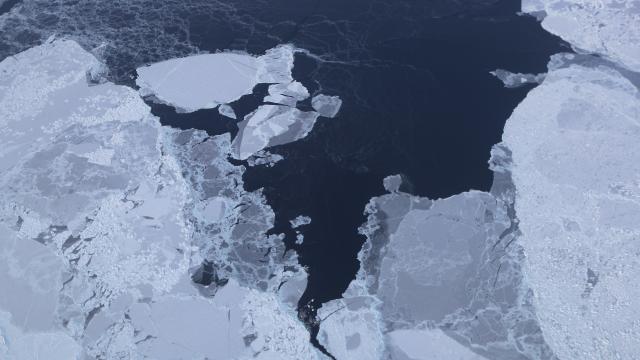Pour one out for old Arctic sea ice, because it’s basically a goner.
The severe toll of climate change at the top of the world is becoming clearer with each passing day. The latest sign comes courtesy of the US National Snow and Ice Data Center (NSIDC), which released its monthly sea ice update this week.
It shows that just 1.2 per cent of ice in the Arctic Ocean is older than four years. Just 35 years ago, ice that was four years old or older made up nearly a third of all Arctic sea ice.
Old sea ice is vital to holding Arctic icepack as a whole together. It acts as an anchor for younger ice and a buffer against the storms that pound the region. But as ocean and air temperatures have risen in the Arctic, its extent has shrunk dramatically.
As the new report reminds us, old sea ice is now on life support. While the summer melt season isn’t likely to deliver the final knockout punch, it will be yet another blow to the region’s ice.
That comes as the Arctic hit a new April low for sea ice extent, beating out April 2016 for the ignominious title.
The loss of old sea ice is intimately tied to the disappearance of Arctic ice cover more broadly. As it melts out, it’s been replaced by younger, thinner ice that breaks up more easily when storms come through and melts more readily in the warming waters.
If the four-plus-year-old ice finally disappears, it will mark the first time on record the Arctic has been without it.
There’s a chance it could come back as the winter refreeze happens depending on what happens to ice in the three- to four-year age range over the course of the summer. If some of this ice makes it through the summer, it would age another year thus replenishing four-plus year old ice.
“The majority of the 3+ year-old sea ice is located north of Greenland,” Zack Labe, a PhD candidate at the University of California, Irvine who studies the Arctic, told us in an email.
“Recent IceBridge and CryoSat-2 satellite observations indicate this area is highly deformed sea ice and quite thick. It is very unlikely this ice will melt during the summer.”
But even the prospect of a slight bounce back of old ice this winter doesn’t negate the trend of widespread ice loss in the Arctic nor the fact that those losses will continue into the coming years.
Mark Serreze, NSIDC’s director, told us that five to ten years is a “more reasonable” timeframe for old ice finally melt away. Research shows the Arctic could see ice-free summers as early as the mid-2030s.
Other parts of the region are undergoing similar dramatic changes. Recent research has shown Greenland is losing six times more ice now than it was in the 1980s while other findings show that the Canadian Arctic hasn’t been as warm as it is now in at least 115,000 years. The landscape is also destabilising and unleashing a wild series of landslides.
So maybe pour one out for those places and the people that live there, too.
